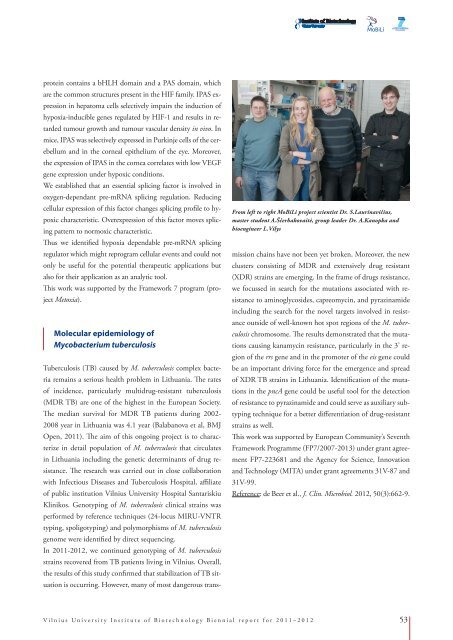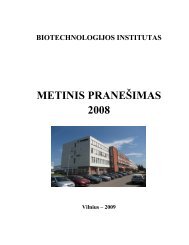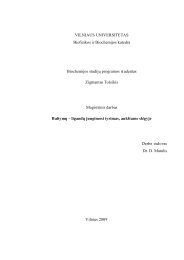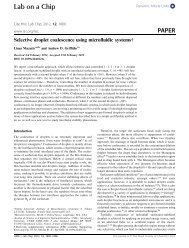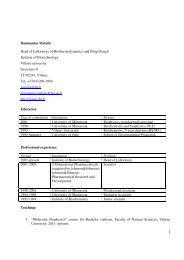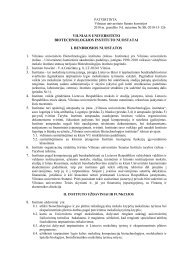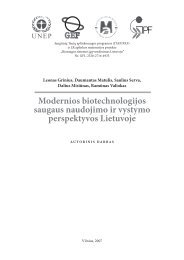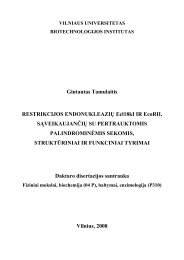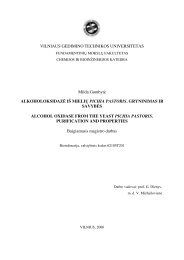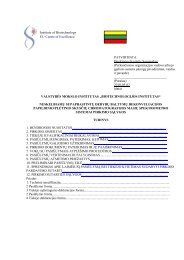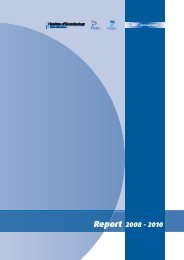Biennial Report 2011â2012
Biennial Report 2011â2012
Biennial Report 2011â2012
You also want an ePaper? Increase the reach of your titles
YUMPU automatically turns print PDFs into web optimized ePapers that Google loves.
protein contains a bHLH domain and a PAS domain, which<br />
are the common structures present in the HIF family. IPAS expression<br />
in hepatoma cells selectively impairs the induction of<br />
hypoxia-inducible genes regulated by HIF-1 and results in retarded<br />
tumour growth and tumour vascular density in vivo. In<br />
mice, IPAS was selectively expressed in Purkinje cells of the cerebellum<br />
and in the corneal epithelium of the eye. Moreover,<br />
the expression of IPAS in the cornea correlates with low VEGF<br />
gene expression under hypoxic conditions.<br />
We established that an essential splicing factor is involved in<br />
oxygen-dependant pre-mRNA splicing regulation. Reducing<br />
cellular expression of this factor changes splicing profile to hypoxic<br />
characteristic. Overexpression of this factor moves splicing<br />
pattern to normoxic characteristic.<br />
Thus we identified hypoxia dependable pre-mRNA splicing<br />
regulator which might reprogram cellular events and could not<br />
only be useful for the potential therapeutic applications but<br />
also for their application as an analytic tool.<br />
This work was supported by the Framework 7 program (project<br />
Metoxia).<br />
Molecular epidemiology of<br />
Mycobacterium tuberculosis<br />
Tuberculosis (TB) caused by M. tuberculosis complex bacteria<br />
remains a serious health problem in Lithuania. The rates<br />
of incidence, particularly multidrug-resistant tuberculosis<br />
(MDR TB) are one of the highest in the European Society.<br />
The median survival for MDR TB patients during 2002-<br />
2008 year in Lithuania was 4.1 year (Balabanova et al, BMJ<br />
Open, 2011). The aim of this ongoing project is to characterize<br />
in detail population of M. tuberculosis that circulates<br />
in Lithuania including the genetic determinants of drug resistance.<br />
The research was carried out in close collaboration<br />
with Infectious Diseases and Tuberculosis Hospital, affiliate<br />
of public institution Vilnius University Hospital Santariskiu<br />
Klinikos. Genotyping of M. tuberculosis clinical strains was<br />
performed by reference techniques (24-locus MIRU-VNTR<br />
typing, spoligotyping) and polymorphisms of M. tuberculosis<br />
genome were identified by direct sequencing.<br />
In 2011-2012, we continued genotyping of M. tuberculosis<br />
strains recovered from TB patients living in Vilnius. Overall,<br />
From left to right MoBiLi project scientist Dr. S.Laurinavičius,<br />
master student A.Ščerbakovaitė, group leader Dr. A.Kanopka and<br />
bioengineer L.Vilys<br />
the results of this study confirmed that stabilization of TB situation<br />
is occurring. However, many of most dangerous transmission<br />
chains have not been yet broken. Moreover, the new<br />
clusters consisting of MDR and extensively drug resistant<br />
(XDR) strains are emerging. In the frame of drugs resistance,<br />
we focussed in search for the mutations associated with resistance<br />
to aminoglycosides, capreomycin, and pyrazinamide<br />
including the search for the novel targets involved in resistance<br />
outside of well-known hot spot regions of the M. tuberculosis<br />
chromosome. The results demonstrated that the mutations<br />
causing kanamycin resistance, particularly in the 3’ region<br />
of the rrs gene and in the promoter of the eis gene could<br />
be an important driving force for the emergence and spread<br />
of XDR TB strains in Lithuania. Identification of the mutations<br />
in the pncA gene could be useful tool for the detection<br />
of resistance to pyrazinamide and could serve as auxiliary subtyping<br />
technique for a better differentiation of drug-resistant<br />
strains as well.<br />
This work was supported by European Community’s Seventh<br />
Framework Programme (FP7/2007-2013) under grant agreement<br />
FP7-223681 and the Agency for Science, Innovation<br />
and Technology (MITA) under grant agreements 31V-87 and<br />
31V-99.<br />
Reference: de Beer et al., J. Clin. Microbiol. 2012, 50(3):662-9.<br />
Vilnius University Institute of Biotechnology <strong>Biennial</strong> report for 2011–2012 53


